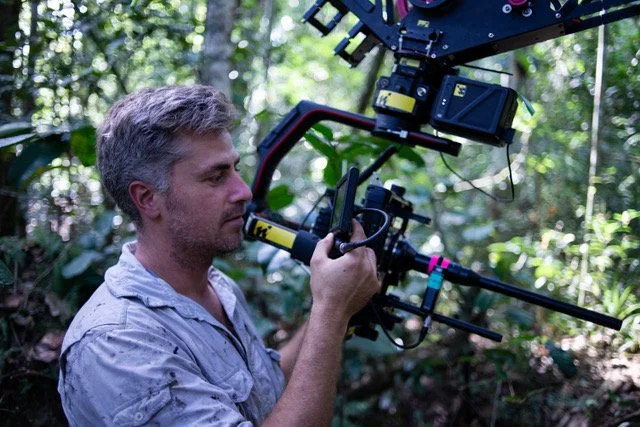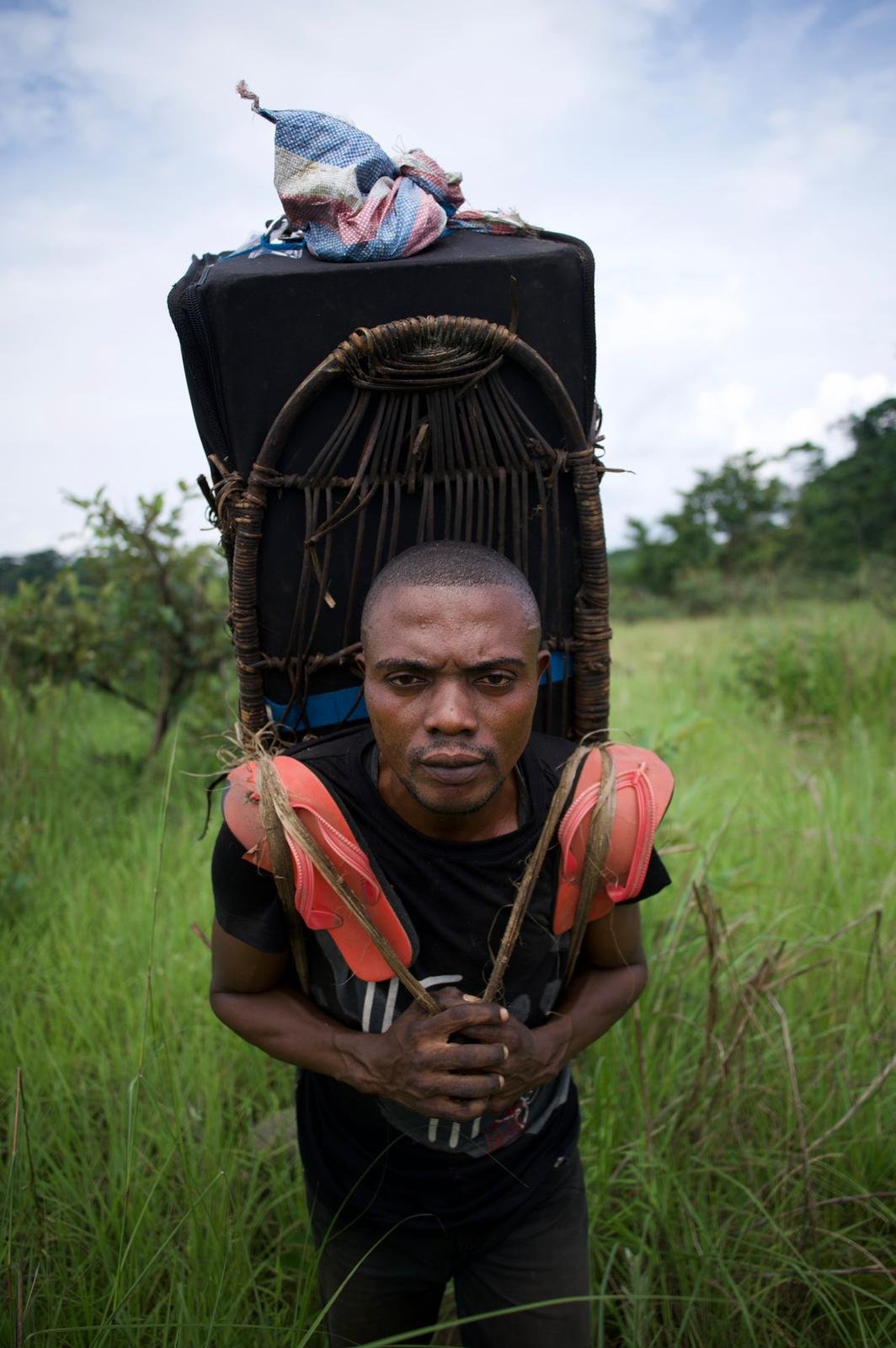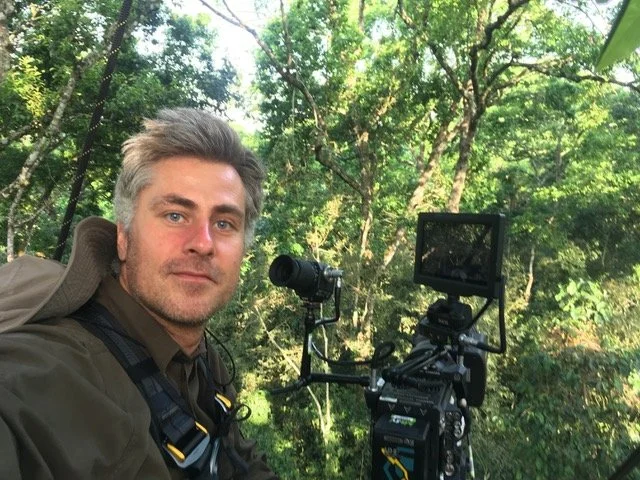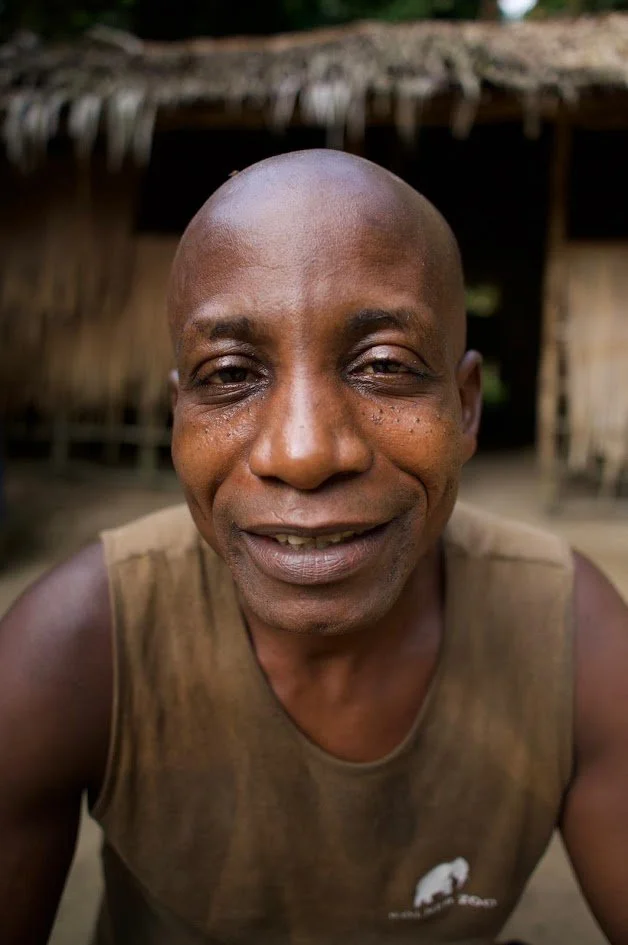Behind the Lens: Inside the Jungle
This week, we sat down with Max Kölbl, a wildlife cinematographer from Germany whose work has taken him deep into some of the most remote jungles on Earth. With over a decade of experience filming great apes and other wildlife, Max brings a unique perspective shaped not only by his time behind the lens, but by his close collaboration with local guides and Indigenous communities. In our conversation, he shares what it truly takes to film in the jungle, the lessons he’s learned from those who call it home, and why recognizing and supporting jungle guides is more important than ever. His mission: to tell stories of the wild that few ever see, and to do so with humility, respect, and a deep reliance on those who know the land best.
“I’ve worked with all the great apes. There’s something about being in their world that changes your sense of time and what matters,” Max reflects. “Their lives are only possible in the jungle — so that’s where I had to go.”
Drawn to the Jungle
Max grew up in Bavaria, Germany, far from the equator and the buzzing pulse of the tropics. Yet something about jungle life always called to him.
“I spent time in jungles even before I started filming them,” he explains. “As a researcher, I worked in some of the most remote places on Earth for months at a time. I’ve always been fascinated by primates — by what we share and what separates us. Since all great apes live in the tropics, the jungle just became the place I needed to be.”
That scientific background informs his work to this day. His sequences are not just about aesthetics — they’re about behavior, social dynamics, and the deeper rhythms of life in the rainforest. He has worked with every species of great ape, and countless other animals, often spending months in the field just to capture a few minutes of footage.
“I love telling social stories — how animals interact, how they perceive the world, what they’re doing all day. It always feels like a privilege to get that kind of access.”
Filming Where Few Tread
Jungles are not for the faint of heart. Max often spends months at a time in dense tropical forests, carrying heavy gear through unforgiving terrain. On his most challenging shoot in the Congo Basin, his team hiked up to 30 kilometers a day for weeks, carrying up to 25 kilograms each — plus an additional 6 liters of water just to survive the sweltering conditions.
“After one shoot in Gabon, it took over two months for the wrinkles in my feet to disappear,” he says with a laugh. “I thought they were going to stay forever.”
But for Max, these are more than technical challenges. They’re part of what makes jungle storytelling real — and why the knowledge and support of local jungle guides are not just helpful, but vital.
Collaboration, Culture, and Respect
“A good relationship with the guides is the most essential thing,” Max explains. “They’re the pros. They often know the animals like they know their own families. The forest is their home.”
Throughout his career, Max has depended on the expertise of jungle guides and Indigenous trackers. Their ability to interpret signs, navigate unseen trails, and understand the rhythms of the forest make all the difference — especially in high-stakes environments where orientation and timing are everything.
“In one shoot after another, it’s the guides who make it possible,” he says. “Even after months in the jungle, I feel a huge sense of relief when I’m with a tracker I trust. It frees me up to focus on the animals and the story.”
Image: A porter carrying camera equipment, Congo Basin. Photo - Max
No matter how well-prepared he is, Max is the first to admit he’d be lost — literally and figuratively — without jungle guides.
“Orientation in the jungle is incredibly tricky. Even after months alone in these environments, I still rely on trackers. It gives me the freedom to focus on the story, to be fully present with the camera.”
The skills of local guides — especially Indigenous trackers — go far beyond what most outsiders can comprehend. Their senses are finely tuned. They know the forest by smell, sound, the feel of the air. They can follow animals without seeing them, read signs invisible to others, and navigate terrain that would leave most lost within minutes.
“I’ve never read a guidebook to jungles,” Max admits. “Everything I know, I’ve learned from them.”
One guide, Tati Wata, left a particularly strong impression:
“They called him ‘L’homme qui fait la loi’ — the man who makes the law. He moved through the forest like a snake, even with a tripod on his back. One of the most magical people I’ve ever worked with.”
The Realities of Life in the Field
Max estimates he spends several months a year in the jungle. The longest uninterrupted stretch? Nine months. And no, it wasn’t easy.
“Every jungle shoot has its own difficulties,” he says. “Sometimes you’re lucky and it’s relatively comfortable. But most of the time, you walk. And walk. And walk — with 25 kilograms of gear on your back. Some days in the Congo we were hiking 30 kilometers. Add to that six liters of water a day, and it’s a serious physical challenge.”
But the biggest obstacle, according to Max, isn’t always the distance — it’s the terrain.
“People don’t realize how punishing the ground can be. In swamps or after heavy rain, just standing upright is difficult. Wet feet all day can destroy you. After one shoot in Gabon, the wrinkles in my feet didn’t go away for over two months.”
On top of that, there’s the gear: keeping cameras dry, batteries charged, footage safe. And the ever-present unpredictability of wildlife — sometimes waiting weeks to see a single behavior.
“The longest I ever waited for a shot was eight weeks,” he says. “You have to be patient. You can’t force nature.”
Image: Max with a parasitic infection, Congo Basin
Working with Indigenous Communities
Max emphasizes that working with Indigenous communities is one of the most rewarding — and essential — parts of his job.
“I really enjoy that side of this work, especially when we can communicate. It doesn’t have to be perfect, but when we share a language — even a bit — something clicks. We move as one team. When the guide and I are on the same mission, everything works better.”
This collaboration isn’t just logistical. It’s cultural. Emotional. Spiritual.
“Their knowledge isn’t just deep — it’s different. It doesn’t come from books or machines. It’s inherited, lived, felt. It goes beyond what we measure. And it deserves far more recognition.”
Max is passionate about seeing guides and local collaborators not just credited, but elevated.
“Their voices are the most interesting, and they get way too little recognition or screen time. They are the real experts. Without them, we couldn’t do any of this.”
Image: Indigenous villagers carry generator gasoline into basecamp. Congo Basin. Photo - Max
Resilience, Preparation, and Respect
Max’s advice to aspiring wildlife filmmakers or jungle professionals? “Be there.” And prepare — in every way.
“Stay fit. Get your shots. Break in your gear. Expect everything to go wrong. Expect heat, insects, soaking wet clothes, power outages, delays, and disappointment. And be ready to embrace all of it.”
He also recommends having the right essentials: reliable boots, a good rain poncho (or two), a hammock, and whatever you need to care for your feet and body. Oh, and bring patience.
“When something breaks or doesn’t go to plan — and it will — chill. Fix what you can. Be calm. Wait for the animals. Don’t rush the jungle.”
Changing the Narrative
Through his work, Max hopes to shift how people view the jungle — and the people who live and work in it.
“I hope people stop seeing jungles as dangerous or hostile. Yes, they’re wild, but they’re also full of life. They have the most beautiful chorus you’ll ever hear. And the communities that live there? Some of the strongest people I’ve ever met.”
His dream is to see more local guides certified, more Indigenous voices in conservation, and more collaborative efforts between storytellers and the stewards of the land.
“Jungle guides should be seen as professionals — because that’s what they are. And certification programs that reflect their knowledge, in their language, at a fair price? That’s the kind of thing that changes everything.”
Image: ‘L’homme qui fait la loi’ — the man who makes the law. Photo - Max
Follow the Story
You can see Max Kölbl’s work on Apple TV, Disney+, Netflix, BBC, and other major platforms. Follow him on Instagram @mkshooots to keep up with his latest adventures, and witness the world’s wild places through the eyes of someone who’s lived in them — step by muddy step, frame by unforgettable frame.
To learn more about how you can support local jungle guides and trackers, as mentioned by Max, chat to him, or check out our Forest Guardians Initiative. You can also speak to any IAJG certified guides, or contact us directly.
To learn more about our specialist jungle guide certification and programs, hit ‘Start’ at the top of this page.
Please Like and Share - it really helps us!







